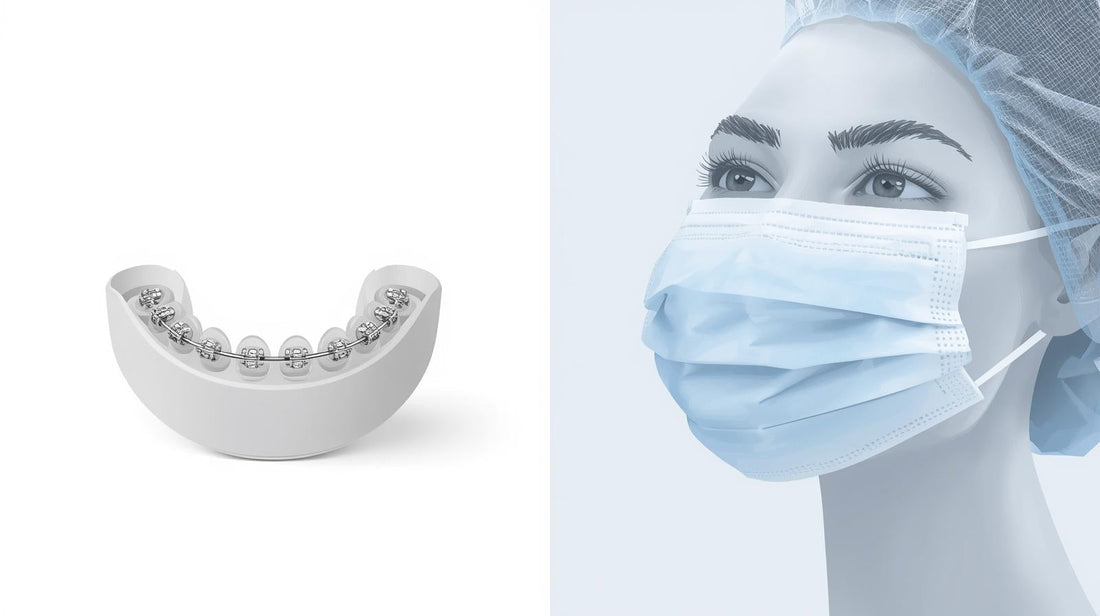
Reviv vs Braces & Surgery for Facial Asymmetry: Pros, Cons, and When to Choose Each
Share
This guide will break down how Reviv compares with traditional orthodontics and surgery.
We’ll cover how each works, the pros and cons, costs, timelines, and when each makes the most sense.
I’ll also share insights you won’t hear from a clinic that has a financial incentive to steer you toward their preferred option.
1. Understanding Facial Asymmetry
Facial asymmetry means one side of your face doesn’t mirror the other.
It can be caused by jaw misalignment, uneven muscle development, past injuries, or dental issues.
Sometimes it’s subtle. Sometimes it’s life-changing.
For more on functional and structural jaw issues, see: TMJ Relief: Why Traditional Treatments Fail.
2. What Is Reviv and How Does It Work?
Reviv is a dentist-approved mouthguard designed to realign your bite and improve muscle balance in your jaw and face.
It works by gently adjusting your jaw position over time, allowing your muscles to function symmetrically.
For more on how Reviv addresses bite mechanics, see: How Correcting Your Bite Can Improve Posture.
3. How Braces Address Facial Asymmetry
Braces use brackets and wires to shift your teeth into new positions.
If your asymmetry is caused by dental misalignment, braces can help—but they won’t always fix jaw bone positioning.
4. How Orthognathic Surgery Works
Orthognathic surgery repositions your upper or lower jaw bones.
It’s usually recommended for severe skeletal asymmetry that can’t be corrected with appliances alone.
For surgical alternatives, see: Best Non-Invasive Alternatives to Jaw Surgery for Chronic Pain.
5. Pros of Choosing Reviv
-
Non-invasive — no surgery, no drilling
-
Lower cost than braces or surgery
-
Faster comfort — noticeable relief in weeks for some users
-
Reversible — you can stop if you don’t like it
Read: Why Buy a Reviv TMJ Mouth Guard?.
6. Cons of Choosing Reviv
-
Requires daily wear discipline
-
May not fix severe skeletal asymmetry
-
Results vary based on muscle responsiveness
7. Pros of Choosing Braces
-
Effective for dental alignment
-
Can be combined with other treatments
-
Permanent tooth repositioning
8. Cons of Choosing Braces
-
Long treatment time (1–3 years)
-
Discomfort and gum irritation
-
Limited effect on bone-level asymmetry
9. Pros of Choosing Surgery
-
Directly addresses skeletal issues
-
Permanent changes to bone structure
-
Can dramatically improve appearance in severe cases
10. Cons of Choosing Surgery
-
Expensive ($20k–$50k+)
-
Long recovery (months)
-
Surgical risks and potential complications
11. Cost Comparison: Reviv vs Braces vs Surgery
-
Reviv: Hundreds to a few thousand dollars
-
Braces: $5,000–$9,000
-
Surgery: $20,000+ plus hospital costs
12. Recovery Time Comparison
-
Reviv: None — you can eat, talk, and live normally
-
Braces: Mild soreness after adjustments
-
Surgery: 6–12 weeks before normal function resumes
13. Speed of Visible Results
Reviv often shows muscle balance changes in weeks or months.
Braces take years.
Surgery changes appearance immediately (once swelling subsides).
14. Who Should Choose Reviv
-
Mild to moderate asymmetry
-
Jaw pain, clenching, or TMJ issues
-
Anyone avoiding surgery but still wanting results
See: Are Mouthguards Effective for Reducing Jaw Tension?.
15. Who Should Choose Braces
-
Crooked or crowded teeth causing bite imbalance
-
Teenagers with ongoing dental development
16. Who Should Choose Surgery
-
Severe skeletal misalignment
-
Significant functional problems (chewing, breathing)
-
When other options have failed
17. Can Reviv Be Combined with Braces or Surgery?
Yes.
Some people use Reviv after braces to maintain muscle balance.
Others use it post-surgery to prevent relapse.
18. Risk Factors to Consider
-
Your bone growth stage (still growing vs adult)
-
Existing TMJ issues
-
Tolerance for recovery downtime
19. Real-World Case Studies
I’ve seen people avoid $30k in surgery by using Reviv for 12 months.
I’ve also seen cases where only surgery could deliver real results.
The key is correct diagnosis before committing
20. Final Decision-Making Framework
Ask yourself:
-
How severe is my asymmetry?
-
Is it mostly muscle or mostly bone?
-
What’s my budget and timeline?
FAQs
1. Can Reviv permanently fix asymmetry?
It can maintain results long-term if worn consistently and your issue is muscle-related.
2. How long before I see results with Reviv?
Some see changes in weeks; most in 3–6 months.
3. Can braces cause facial asymmetry?
Yes, if applied incorrectly, they can worsen imbalance.
4. Is surgery always permanent?
Yes for bone changes, but muscles can still shift over time.
5. Can I start with Reviv and switch to braces later?
Yes, they’re not mutually exclusive.
6. Is Reviv safe for kids?
Consult a pediatric dentist—jaw growth patterns matter.
7. Does Reviv hurt?
No, though you may feel mild jaw muscle fatigue initially.
8. Will insurance cover Reviv?
Not usually—it’s often classified as an elective device.
9. Can Reviv fix posture?
Yes, in some cases, by improving jaw alignment and muscle balance.
10. How do I know if my asymmetry is bone or muscle-related?
A dentist or orthodontist can assess via scans and bite analysis.
Conclusion
Choosing between Reviv, braces, and surgery for facial asymmetry isn’t about which is “best”—it’s about what’s best for your unique case.
If you want non-invasive, affordable, and reversible—Reviv wins.
If you need tooth realignment, braces are the tool.
If you have severe skeletal issues, surgery is the only direct fix.
If you’re curious, try the simplest, safest step first.
Click Here to explore Reviv products and see if they could be your game-changer.
